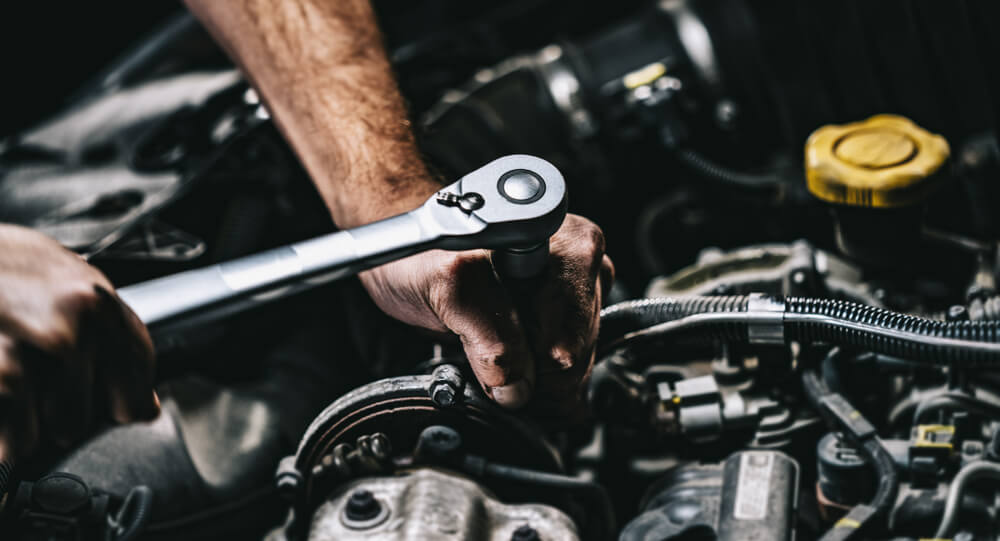Gearbox repairs are notoriously expensive, and just the thought of getting one done for your car can be scary. That's understandable, as gearboxes are complex components requiring much effort to troubleshoot and repair. But exactly how much does gearbox repair cost in Australia?
Gearbox repair can cost from $200 to $1,000 or more. That's because some car models have more complex gearboxes than others. Generally, the more complex the component, the more challenging (and more expensive) it is to work on. Most of the cost goes towards labour charges.
In this guide, you'll learn how much it costs to get your gearbox fixed in Australia. You'll also know which symptoms point to a gearbox problem that requires immediate attention.
How Much Does Gearbox Repair Cost?
Gearbox repairs are labour-intensive and time-consuming, so they’re quite pricey. You can expect to pay anywhere from $200 to $1,000 or more for basic gearbox or transmission repairs, but that’s only a rough estimate.
The wide range is not surprising, considering that some cars have more complex gearboxes than others. As with most things in automotive repairs, the more complex a component is, the more expensive it’ll be to repair.
The actual cost depends mainly on the gearbox’s condition and the repairs required. For that reason, it is important for a mechanic to thoroughly inspect the gearbox first before giving a quote.
A significant portion of the cost is the labour charges involved. As you’ll understand more below, gearbox repairs are anything but straightforward. That means a mechanic will spend plenty of time and effort working on your gearbox, which will be reflected in the repair costs.
Thankfully, there’s a silver lining. Since a big part of the gearbox repair cost is for labour, you can shop around and compare different workshops. Some will charge significantly less for labour, lowering your overall gearbox repair cost.
What Happens During a Gearbox Repair?
So why are gearbox repairs time-consuming and labour intensive? To answer that question, let’s see what happens during gearbox repairs.
Here are the different stages of a gearbox or transmission repair:
- Total disassembly: The challenge with gearbox repairs is that you can’t perform them while the gearbox is still in its original position. The first thing the mechanic must do is take apart the gearbox so they can look inside to determine what’s wrong with it.
- Analysis: Gearboxes have plenty of moving parts of various sizes inside. So, it’ll take quite some time for the mechanic to inspect those parts and determine which ones are causing the problem. Simultaneously, they’ll have to look for worn-out or damaged parts that must be replaced.
- Replacing worn or damaged parts: The next step is for the mechanic to replace the worn or damaged parts found in the previous step. This includes replacing things like bearings, gaskets, gears, and anything else that could negatively affect the gearbox.
- Remanufacturing of some parts if there’s a need: In some cases, the gearbox might need replacement parts that aren’t readily available. When that happens, there’s no choice but to remanufacture the necessary part from scratch. This process requires specialised skills and tools.
- Reassembly: The final step is to reassemble the gearbox and mount it back in your vehicle.
As you can see, repairing your car’s gearbox is much more intensive than dealing with most other components in the vehicle. That’s why repair costs can be pretty high, and much of those costs go towards labour charges.
How Do I Know If I Need to Repair My Car’s Gearbox?
Unfortunately, there’s no way to visually confirm that you need gearbox repairs unless you remove it from the vehicle and disassemble all its components. So, you’ll have to rely on other symptoms to know when your gearbox needs repairs or replacement parts.
When you experience any of the symptoms listed below, you must first check that you’ve covered all the basics. That means your transmission should have enough fresh fluid, and there should be no leaks anywhere.
Low or dirty fluid can cause many of the problems below, and that does not require gearbox repairs.
Once you’re sure that your transmission fluids are clean and at the correct levels, these are the symptoms that suggest you’ll need to get your gearbox repaired:
Hard Shifting or No Shifting
Your gearbox or transmission is designed to transfer the engine’s power to your vehicle’s wheels. As it does that, it’ll shift to different gears, searching for the one that allows it to do its job most efficiently.
So, when your gearbox has difficulty shifting gears or doesn’t shift at all, that’s a clear sign that it requires repairs. Something inside is not functioning correctly and needs to be diagnosed.
Loud Whining, Grinding or Rattling
Loud noises are another tell-tale sign that something is amiss inside your transmission. Sounds like whining and grinding happen when parts don’t move as smoothly as they should inside the transmission.
Meanwhile, a loud rattling while the transmission is in neutral is another sign that something is loose or broken inside.
Burning Smells
Lastly, burning smells coming directly from the gearbox suggest there’s a severe problem inside.
Remember: Gearboxes have many moving parts that must never grind against one another. Clean transmission fluid prevents that from happening.
Metal parts that grind against each other will cause friction, leading to high temperatures that generate the burning smell you notice.
Burning smells suggest a severe problem inside, as grinding means parts are damaging themselves from within.
As you read earlier, gearbox repairs can get quite pricey, primarily because of the labour charges. So, you’ll want to use the CarpartAU Directory to identify the different workshops in your area. You can get their contact details from the Directory and compare their gearbox repair prices to find the best one for your budget.
By Ray Hasbollah

